DXY was smashed last night:

AUD soared though fell against wider DMs:

Against EMs it was mixed:

Gold is at the breakout line and the chart is a bullish ascending triangle:

Brent was firm:

Base metals loved it:

Big miners rebounded:

EM stocks are parabolic:
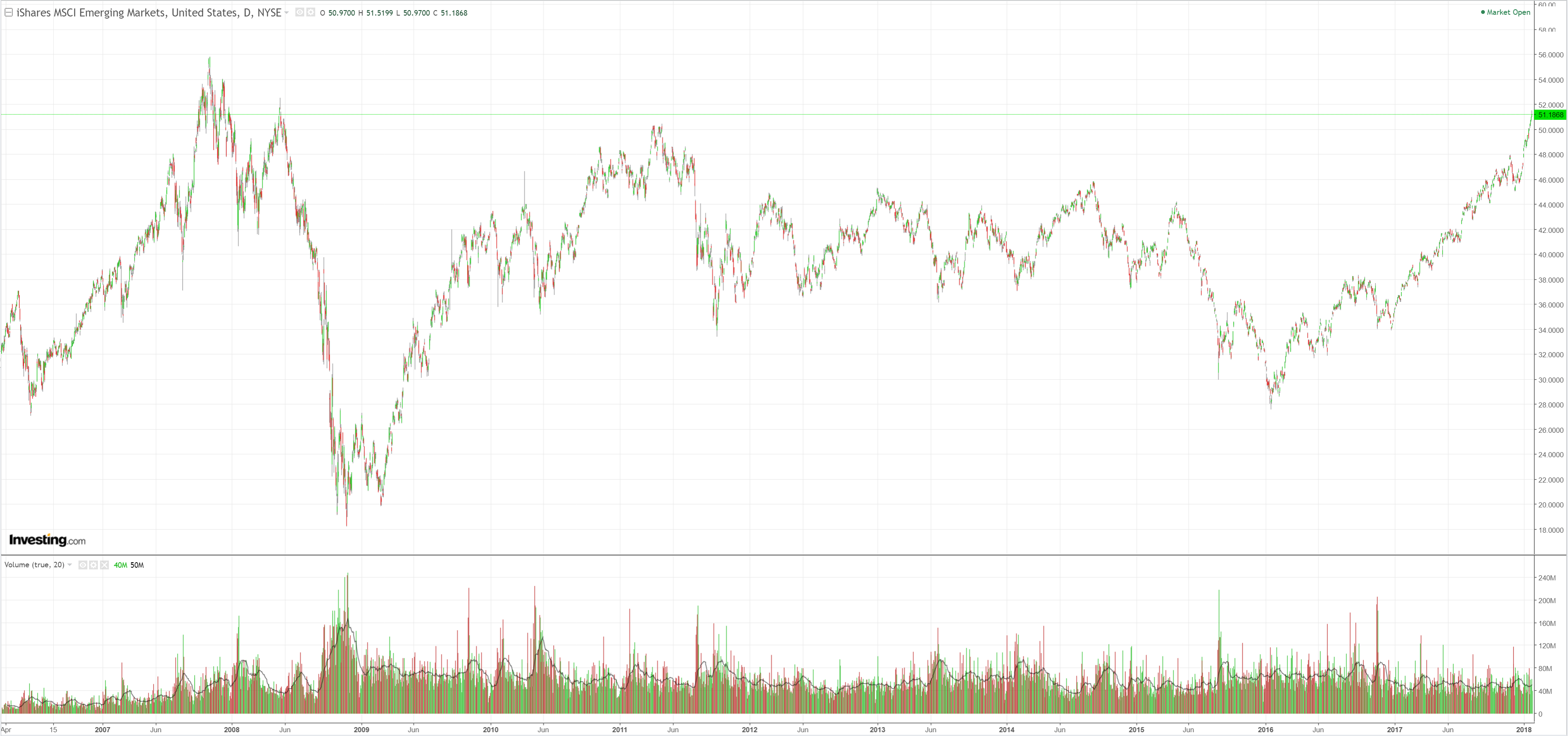
Junk says no:
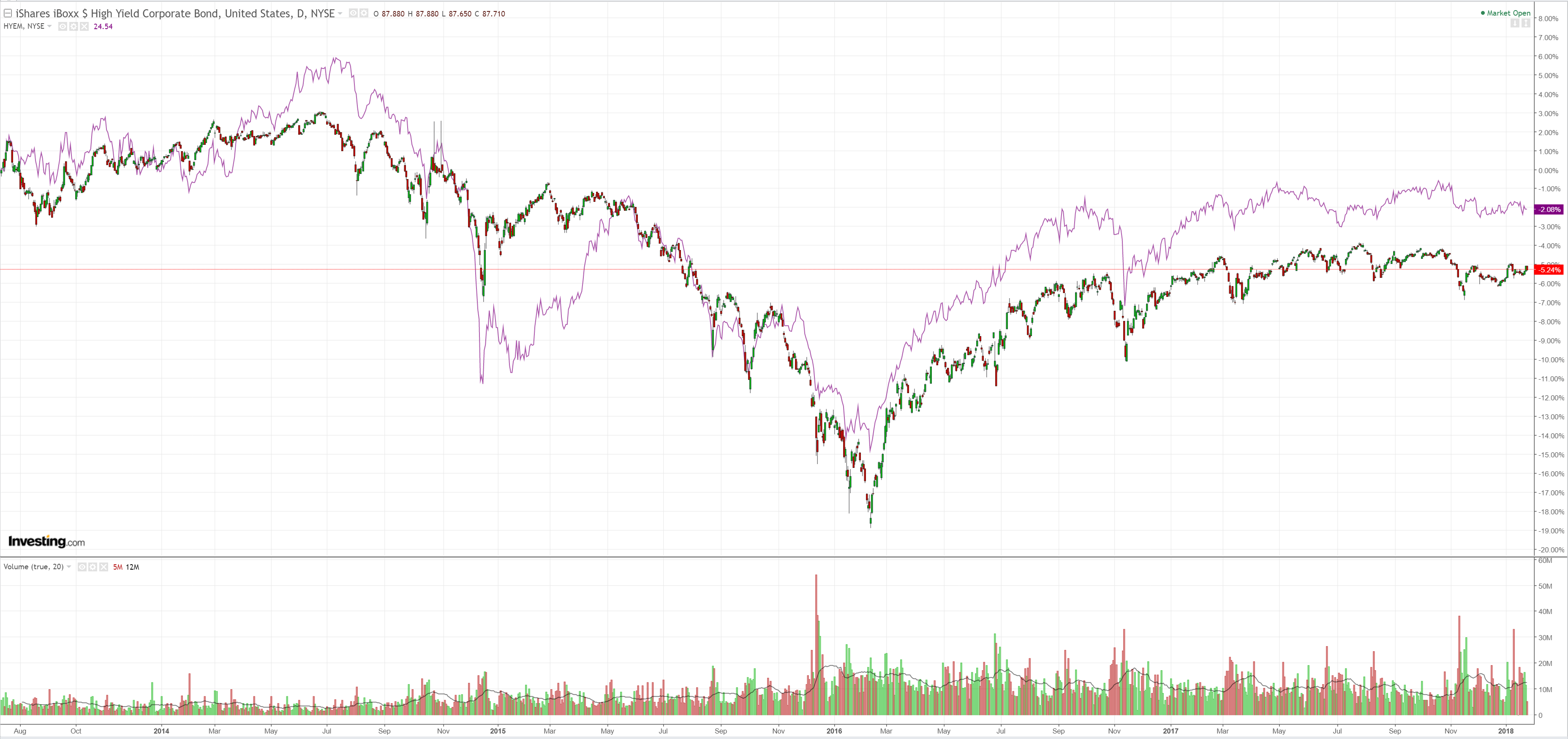
Treasuries were sold again:
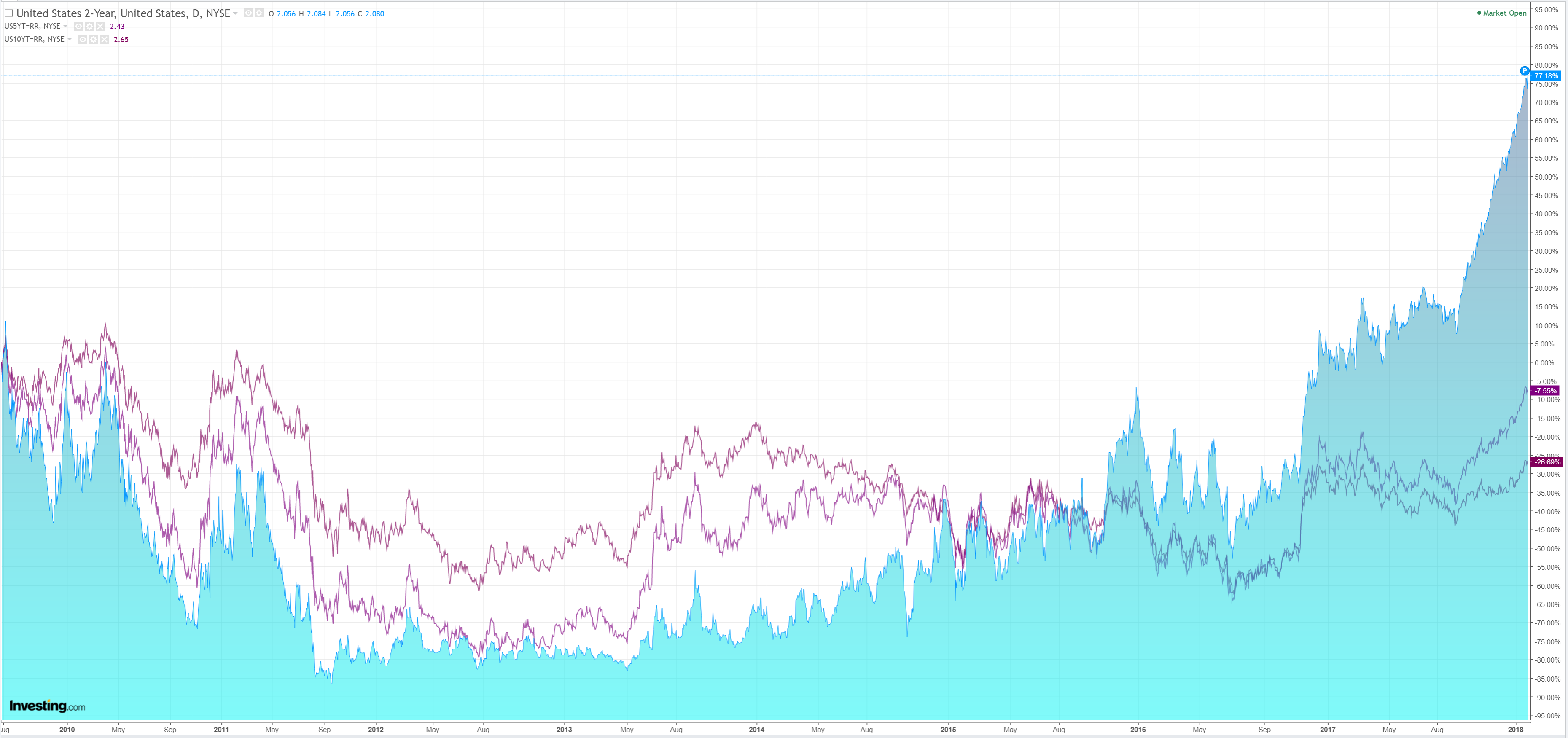
Bunds a little:
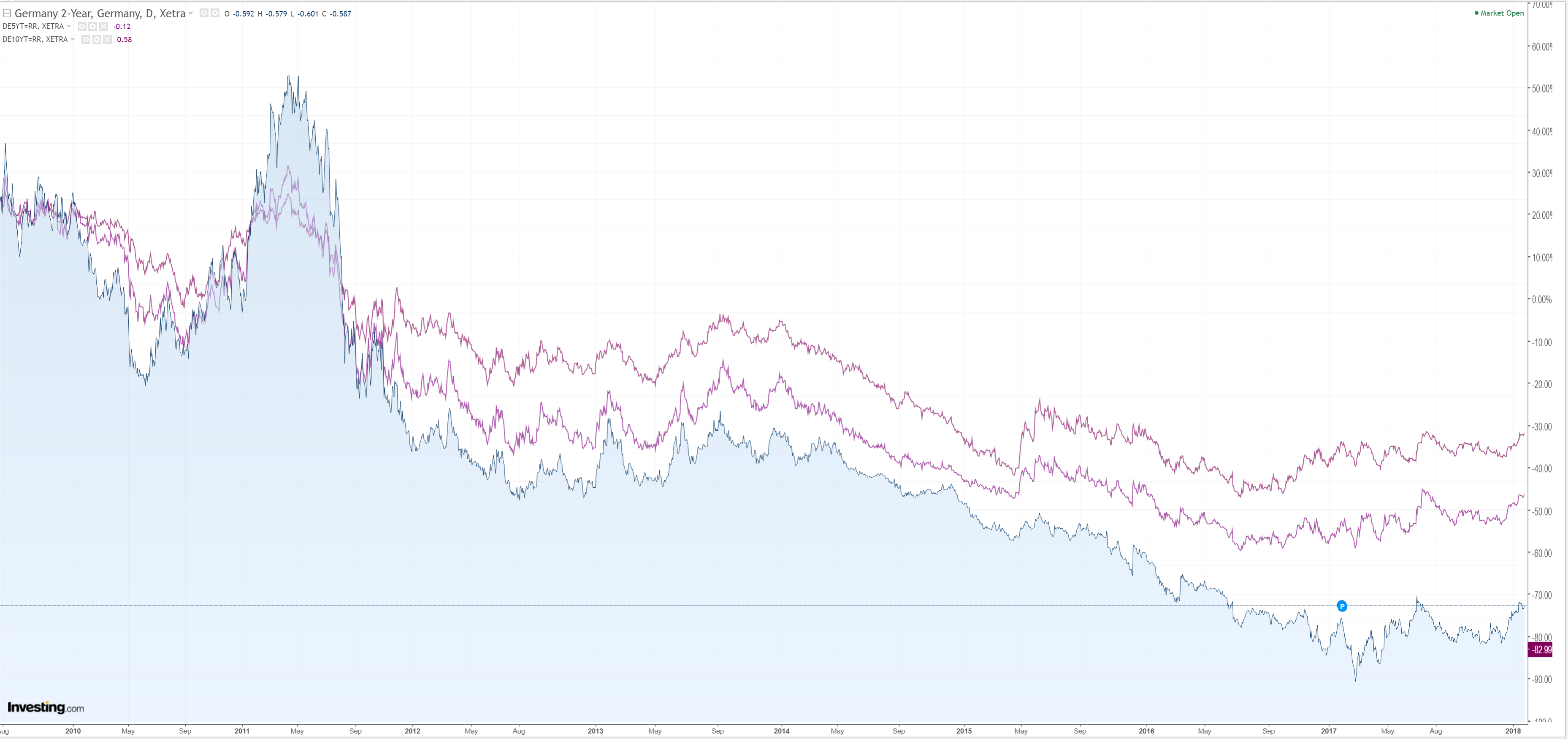
Stocks flamed out:
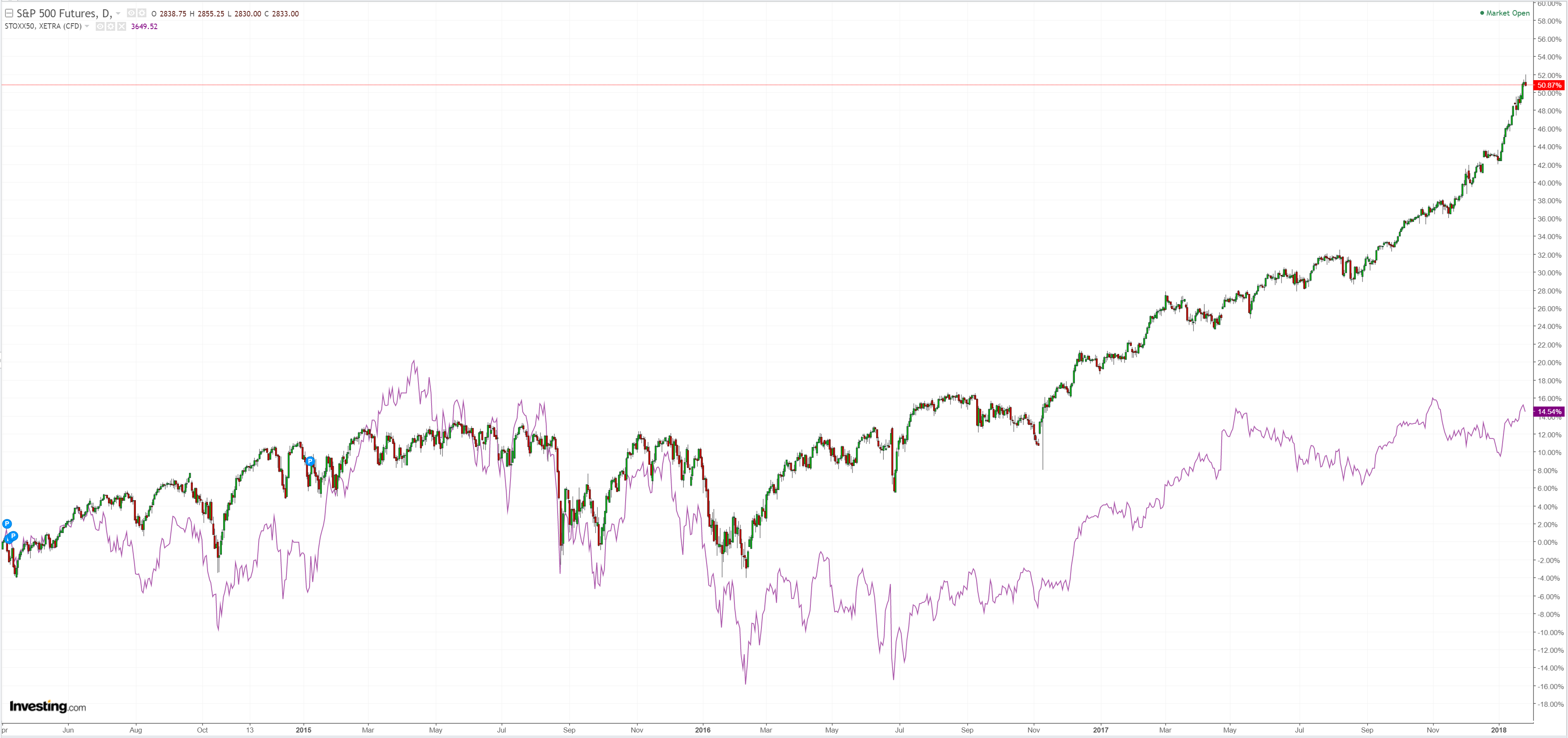
Data was solid in Europe as PMIs missed a little but are still red hot. US existing home sales were soft.
Adding to these, the already weak US dollar was pounded lower by US authorities, via Bloomie:
President Donald Trump’s top economic advisers set the stage for the rollout of his “America First” manifesto on the world stage.
A day before Trump’s scheduled arrival in the Swiss ski resort of Davos for the World Economic Forum’s annual meeting, Treasury Secretary Steven Mnuchin endorsed the dollar’s decline as a benefit to the American economy and Commerce Secretary Wilbur Ross said the U.S. would fight harder to protect its exporters.
“Obviously a weaker dollar is good for us as it relates to trade and opportunities,” Mnuchin told reporters in Davos. The currency’s short term value is “not a concern of ours at all,” he said.
“Longer term, the strength of the dollar is a reflection of the strength of the U.S. economy and the fact that it is and will continue to be the primary currency in terms of the reserve currency,” he said.
The greenback, extending its 2018 slide after Mnuchin spoke, is now at its lowest in three years as measured by the Bloomberg Dollar Index. Investors have sold the currency in part because of concern over Trump’s protectionist push highlighted by this week’s slapping of tariffs on solar panels and washing machines.
While Mnuchin’s blast echoed Trump administration doubts over a strong currency, it marked a confrontation with the global elite in Davos over their “America First” agenda. Ross, speaking alongside Mnuchin, says more measures at defending U.S. commerce are in the offing.
“Trade wars are fought every single day,” he said. “So a trade war has been in place for quite a little while, the difference is the U.S. troops are now coming to the rampart.”
Now we know why Trump sent the big team to Davos.
The question is, does this mark a high or low water mark for DXY weakness? At current levels it is already going to deliver the US a huge tailwind and inflationary boost when it is already much later in its business cycle than other DMs. My best guess is it more likely to be closer to the end of dollar weakness than the beginning but first markets will do what they do best: overshoot. Via Bank of Tokyo Mitsubishi:
Under current circumstances, there is a building risk that US dollar weakness could even begin to overshoot fundamentals in the near-term.
A repeat of price action from back in early 2004 can’t be completely ruled out. After breaking back above the 1.2000 level late in 2003, the euro continued to strengthen sharply against the US dollar towards the 1.3000 level in the opening months of 2004 before settling back into the 1.2000 to 1.2500 range, which is around where we currently estimate long-term fair value for the pair.
That’s a pretty good analogy and if it is the base case then the USD/EUR, which has been the key swing pair in the dollar weakness, would have another 4-5% downside. That, in turn, would deliver a spike in the Australian dollar to 84-5 cent range before it pulled back.
That said, we have the ECB tomorrow which must be feeling uncomfortable now with the EUR. And, potentially more disruptive still, is the Italian election in early March where the front-runners are all anti-EUR parties:
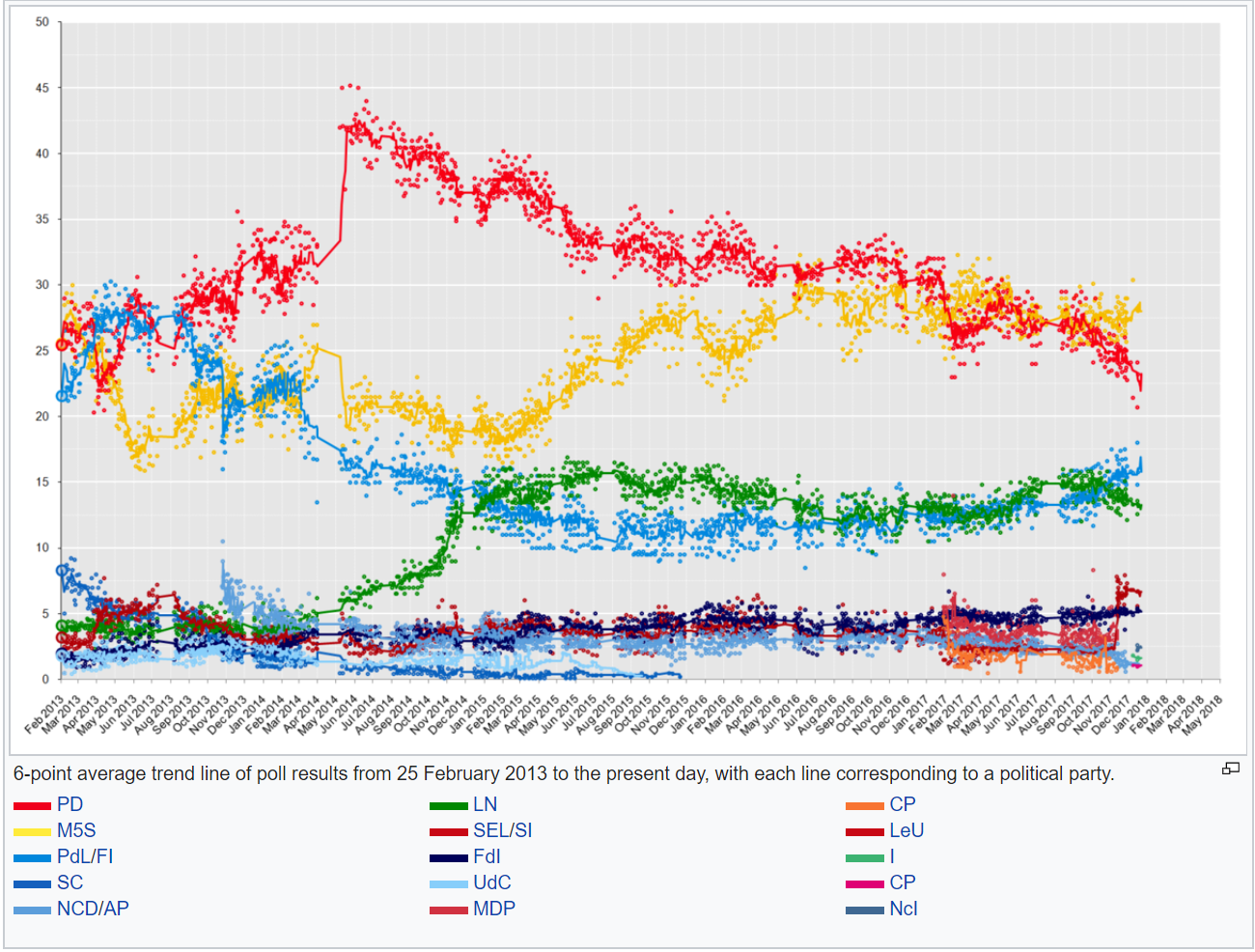
The prospects are at best murky, via the WSJ:
The antiestablishment 5 Star Movement founded by former comedian Beppe Grillo has the support of close to 30 per cent of voters; a right-wing coalition comprising former Prime Minister Silvio Berlusconi’s Forza Italia, the populist euroskeptic Lega and the fascist Brothers of Italy, has around 35 per cent with a campaign that appears designed to match Five Star’s extravagant spending commitments and a promise to reverse recent reforms; meanwhile the Democratic Party, which has governed Italy under three different rime ministers in five years, languishes at around 23 per cent, according to a new poll.
The Italian elite have a cunning plan to retain control after the election: Its hopes are pinned on a grand centrist coalition between the Democratic Party and Forza Italia, most likely under the leadership of current Prime Minister Paolo Gentiloni. Some say the it would amount to the reincarnation of the Christian Democrats.
Senior figures in Forza Italia have made little secret that this is their goal since Mr. Berlusconi reneged on a previous deal with former Prime Minister Matteo Renzi, the leader of the Democratic party, by opposing his proposed overhaul of the constitution in a 2016 referendum. That defeat cost Mr. Renzi his job.
But this plan to fix the outcome of the election even before a vote has been cast is now in doubt thanks to the collapse in support for the Democratic Party, widely blamed on public antipathy to Mr. Renzi. This is filling the Italian elite with anxiety: What happens if the Democratic Party and Forza Italia don’t win enough seats to form a government? Will Five Star do well enough to form a government, perhaps in coalition with the League? Will the right-wing coalition win over 40 per cent, the likely threshold to win a majority of seats in both houses of parliament?
Adding to the anxiety, the election will be based conducting using a new electoral system in which around 30 per cent of the seats will be awarded to whoever comes in first and the rest based on each party’s share of the vote, making the outcome highly unpredictable.
True, the outcome most feared by the Italian elite — a Five Star government in coalition with the League — looks highly unlikely. Not least, this stems from the League’s divisions: 40 per cent to 45 per cent of the party won’t go into an alliance with Five Star under any circumstances, according to a senior party figure.
But what if the right-wing coalition wins a majority and then proceeds to implement its populist manifest? Some coalition members privately insist that their campaign promises shouldn’t be taken seriously and that the coalition is merely a tactical alliance for the elections. But they would hardly be the first political group to run a campaign they never expected to win only to be catapulted into power by voters.
Holding EUR is all the rage on the cyclical impulse but do you really want to leap that structural crack overly long?

